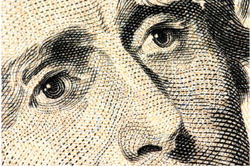*|MERGE4|*, *|MERGE5|*

|
|
Links
|

Dear *|MERGE3|* *|MERGE2|*: • A federal district judge in Wisconsin ruled that the National Day of Prayer is unconstitutional; but the 9th Circuit Court of Appeal in California ruled that the Pledge of Allegiance – with the words “under God” – is constitutional. • The Supreme Court signaled that a memorial cross in the Mojave Desert is constitutional; but the High Court ruled that displays of the Ten Commandments in local courthouses are unconstitutional. • The Supreme Court ruled that prayers before state legislative sessions are constitutional, but a federal district court in Indiana ruled that the prayers before the Indiana legislature were overly sectarian, and thus unconstitutional. (A similar battle over this issue is playing out in Lancaster, Calif.) The conflicting outcomes in these cases – and conflicting interpretations of the outcomes – reflect sharp divisions over the meaning of the First Amendment’s Establishment Clause — “Congress shall make no law respecting an establishment of religion.” The divisions in the courts reflect the disagreement in the broader society over the proper role of religion in American public life; and just how far church and state should be separated. Read the complete article on SageLaw. The Court’s history and struggles with the meaning of the First Amendment are further examined in the Massachusetts Press book, Religious Liberty in America: The First Amendment in Historical and Contemporary Perspective by Bruce T. Murray.
Religious Liberty in America is available at libraries throughout North America, and it may be purchased from the University of Massachusetts Press. Read about the author on SageLaw. |

